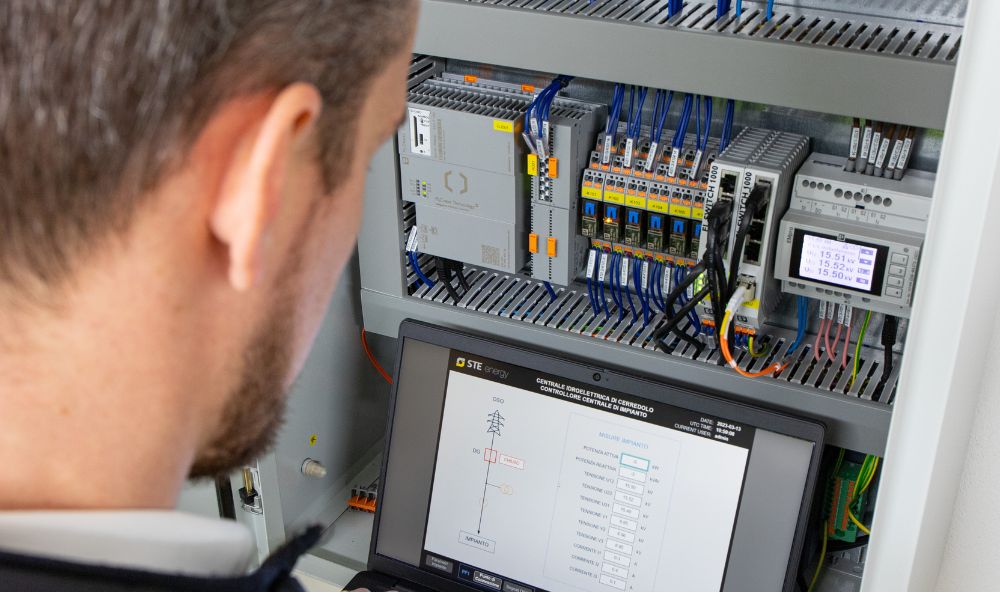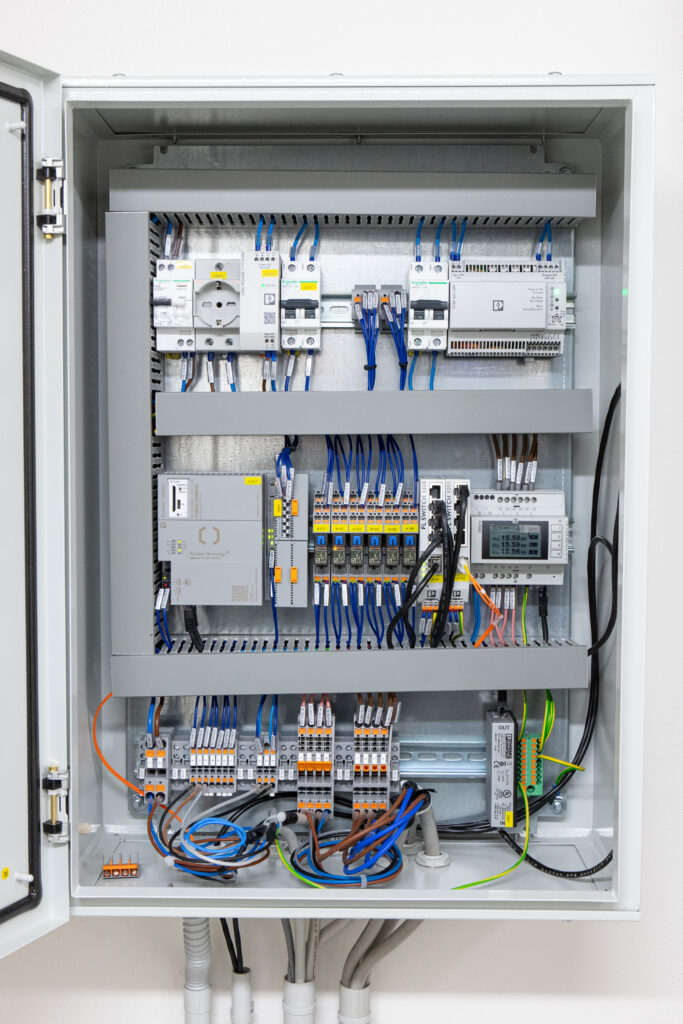
PLCnext Control as a central component for monitoring and controlling decentralized power generation
Medium-voltage systems have to cope with peak loads and distribute energy in the best possible way. The European guidelines require monitoring of decentralized generation, for example by solar and wind power plants. For this purpose, the Italian CEI (Comitato Elettrotecnico Italiano) has defined the use of a Central Plant Controller (CCI). STE Energy and Phoenix Contact with PLCnext Technology offer operators a complete solution.
The increasing number of decentralized renewable energy plants and their steadily growing output are proving to be a challenge for medium-voltage networks. This is because today the focus is on optimized power generation rather than network stability. Without adequate management and monitoring of the network, outages, anomalies or interruptions can occur. This long-known problem is now being addressed by EU-wide standards. The European System Operator Guideline (SOGL) for the electricity transmission system establishes the importance of monitoring and controlling distributed generation – especially from non-programmable renewable sources – for all plants of one megawatt or more. The decentralized communication to the control centers of the Distributor Network Operators (DSOs) required for this purpose necessitates suitable cybersecurity measures. The CEI has defined these requirements in CEI 0-16 and prescribes the use of a Central Plant Controller (CCI) for monitoring the most important electrical parameters. STE Energy and Phoenix Contact have now developed an overall concept that enables plant operators to meet this challenge holistically and easily.
STE Energy S.r.l. is an Italian company specializing in renewable energy plants and electrical infrastructure. With over 25 years of experience and more than 450 projects in 30 countries, the capital company is internationally positioned. Due to the cooperation with the Italian subsidiary of Phoenix Contact, plant operators receive a complete service for the commissioning of intelligent and efficient energy management.
Comprehensive security requirements for the Central Plant Controller
The Central Plant Controller specified in CEI 0-16 is installed at a critical point – namely at the transition of the power generation plant to the public grid. Therefore, good data integration, compatibility, non-reactivity and security requirements play a decisive role. The standard requires the implementation of further standards as well as their verification by independent tests. These standards include IEC 61850, IEC 62351 and IEC 62443. IEC 61850 defines a common transmission protocol by which data is exchanged between the various components of a power distribution system. The protocol enables the components to connect and communicate with each other to ensure interoperability and reliability of the power distribution system.
IEC 62351 identifies a common security model that is used to provide access security in power distribution. The model specifies a number of security measures, such as TLS-based data transmission and certificate management, as well as user management and security event logging. Finally, IEC 62443 regulates the security requirements for operators, system integrators and component manufacturers. For example, the CCI must be developed according to the secure-by-design guidelines of IEC 62443-4-1 ML3 and must support at least the functions according to IEC 62443-4-2 SIL1. This includes, for example, the use of security protocols, authentication mechanisms and encryption techniques. These security measures effect the integrity and confidentiality of the data communication between the systems.
Ready-to-install provision as a control cabinet solution
The central plant controller implements the monitoring functions and provides the information on power generation at the connection point – aggregated according to the generation source, i.e. wind, photovoltaic, thermoelectricity, hydropower or storage. Optional services for controlling the system must be offered to the Distribution System Operator (DSO), which provides a bidirectional communication channel with the Transmission System Operator (TSO). In addition, general functions for commissioning and reconnection, asset management and improved marketing models are to be implemented.
The CEI 01-16 specifies the CCI hardware and solution in detail. For example, the use of at least three independent network interfaces is required. One interface is used to exchange data with the grid operator, the second to communicate with authorized remote entities and the third to connect to the network elements of the local power plant. Our PLCnext Control AXC F 3152 meets the hardware requirements and tests according to the necessary standards. A powerful processor also allows the integration of the required transmission protocols, in particular the MMS communication according to the IEC 61850 standard. PLCnext Control serves as a central part of the solution from STE Energy and Phoenix Contact, which is provided as a ready-to-install control cabinet.

Simple network expansion without modifications
Connectivity, time synchronization and high measurement accuracy require additional components in the control cabinet. For the connection of the network operator via fiber optic cable, a compact switch of the FL Switch 1000 series is used, which functions as a media converter. To ensure the minimum accuracy class of 0.5 percent of active power (P), reactive power (Q) and 0.2 percent of voltage (V) required at the connection point, an EMpro energy data acquisition device is used. The modular I/O modules of the Axioline SE product family are used to easily accommodate the digital logic signals of the Central Plant Controller. They line up on the right side of the PLCnext Control and, due to their free slots, enable network expansion without conversions.
To ensure that all collected data is recorded with a correct time stamp, a local timeserver is required. The device, in the form of the FL Network Server, works with GPS and NTP (Network Time Protocol), so that the absolute time is always available with the highest accuracy. To support the active part of the solution, all passive components require special conformity tests in accordance with CEI 0-16, which Phoenix Contact devices include. Power supplies of the Uno series with UPS system (uninterruptible power supply), interface relays and connection terminals of the Complete Line series round off the solution with a uniform assembly.
Demand-oriented use of regeneratively generated energy
Phoenix Contact’s All Electric Society mission statement describes a world in which energy from renewable resources is available worldwide in sufficient quantities as well as at economic cost. The creation of intelligent networked systems for the demand-oriented use of regeneratively generated energy is proving to be the key to a sustainable future. The interaction of all Phoenix Contact competences in the areas of communication, automation, network and connection technology as well as power supply in combination with the necessary certifications has resulted in a future-oriented solution for energy management that optimally complements the project know-how of the partner STE Energy.
Want to find out more about our certified PLCnext Control? Then click here




